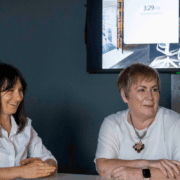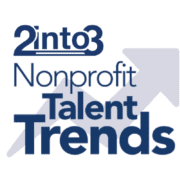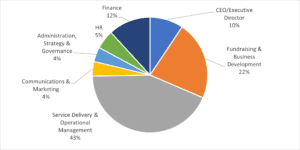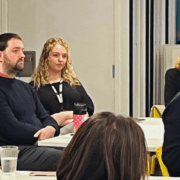When commencing the planning process for a strategic corporate partnership, it is crucial to create a partnership culture within your organisation. Including other team members in the process will help work towards your partnership vision, empower new ideas and encourage shared resources. Furthermore, placing the right people in your partnerships team will create a broader reach, ultimately attracting more donors and funding to your cause.
1. Create an internal partnerships culture
When recruiting and building your internal partnerships team, remember that those with a shared vision will work best together. Therefore, it’s vital that you connect your colleagues to the end product of what you are aiming to achieve — make sure they see your vision. Commonalities bring teams together, so try to find those who are passionate about what you are proposing.
Ensure you delegate roles and responsibilities to each team member, so they understand their input. This presents an opportunity to play to people’s strengths. For example, if an individual has marketing experience, you could provide the opportunity to create a cause-related marketing plan. Delegating individual tasks will create a feeling of ownership, which will maintain enthusiasm and determination. Ensure you provide clear expectations when delegating and introducing new tasks.
2. Allocate brainstorming time
Set up regular meetings with your partnerships team to understand their priorities and agree ways of working together. Provide opportunities for their input, as this will help spark new ideas. People find passion in what they create, so ensure you create a space that allows creativity to flow between all individuals.
It is good practice to receive input from colleagues before making decisions, as part of a habitual process in the workplace. When problems arise, avoid enforcing a plan for your team. Instead, ask for their potential solutions to ensure they remain a crucial part of the process. By empowering your team members, it instils their confidence to think critically and make their own decisions.
3. Invest in your team
Investing in your team means investing in your mission. The mission follows the team; if the team is working well, then the mission will be fulfilled. Help connect your team with the overall mission and what their work will achieve. Just as you will want to frame the impact to donors about what their funding and support will achieve, making the connection for the partnerships team will help them stay motivated throughout the process. They are the ones making this possible.
4. Provide support and encouragement
Employees appreciate support, encouragement, explanation and guidance. Therefore, it is important to continually provide guidance at each step of your partnership process. Strive to understand each individual’s strengths and weaknesses on your team. Foster their failures and celebrate their successes — in a team, they are everyone’s failures and successes. Take the time to truly get to know your team, get a sense of what they enjoy, what they’re good at and what motivates them.
Furthermore, it is important to encourage each member of your team to set tangible goals with timelines. There is a significant difference between “do outreach” and “reach out to 15 people this week to ask them to support the initiative”. By creating concrete action items, team members will be accountable for their contributions. A great way to set goals is to make sure they are SMART: Specific, Measurable, Achievable, Relevant, and Timely.
5. Evaluate
Constructive criticism can be a positive learning opportunity for any high performing team. Evaluation provides an opportunity to identify where we can improve and reflect on what we are doing well. Providing feedback in an empathetic manner that considers employees’ needs is extremely important.
Furthermore, evaluation is a balancing act. Try to set high expectations that stretch people outside of their comfort zone, but not so high that they are discouraged and defeated.
Conclusion
Hopefully by following these 5 suggestions, your organisation will be on the way to creating a high performing partnerships team. It is important to recognise that everyone has different capabilities, attitudes, and personal goals. Therefore, expectations should be set on an individual basis. Remember that collaboration and shared visions are necessary, so remember to highlight your organisation’s vision, facilitate team bonding opportunities and ask for feedback on how to improve the team.
Contact Us
If your organisation is considering a strategic partnership, contact Denise Cranston, Head of Partnerships Advisory Practice, 2into3. More information here.

















